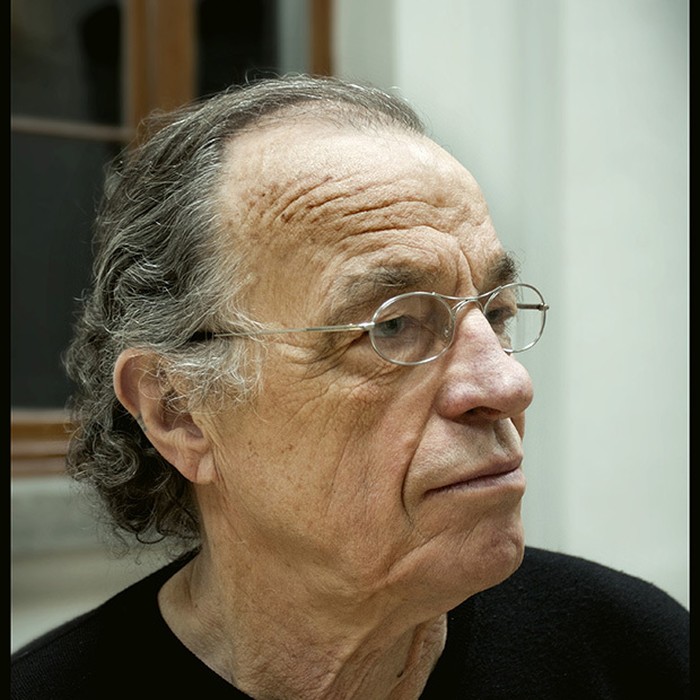
Visiting artist professor
1999 - 2000
Peter Downsbrough
Born in 1940 in New Brunswick (United States)
Died in 2024 at Bruxelles (Belgium)
Active since the late 1960s, Peter Downsbrough has developed a multifaceted body of work -- sculpture, photography, public commissions, books, films... -- in the continuity of Minimalism, at the crossroads of conceptual and concrete art.
After studying architecture for three semesters (1958–59 at Cincinnati, followed by one semester at Cooper Union), he decided to become an artist. Between 1964 and 1970, he left New York to build a house and studio in New Hampshire, before returning to the city after the summer of 1970.
He then grew close to artists such as Lawrence Weiner and Robert Barry, and followed the work of Stanley Brouwn, Dan Flavin, Donald Judd, and Sol LeWitt.
In 1976 Peter Downsbrough was invited to take part in Rooms, the first exhibition at P. S. 1, an art space created by Alanna Heiss in Queens, which has been affiliated to MoMA since 2000. In 1980, he annexed the "Spectacolor Board", the famous illuminated panel in New York's Times Square, for four days.
*Position is the title of Peter Downsbrough's retrospective monograph, published by Presses du réel in 2004. It was published on the occasion of the overview exhibition at the Palais des Beaux-Arts in Brussels, in collaboration with the Espace de l'Art Concret, Mouans-Sartoux, and the Muzeum Sztuki, Lódź, in Poland.
Very active in the field of artists' books, Peter Downsbrough exhibited in 2015 at cdla, the Centre des livres d'artistes en Nouvelle-Aquitaine. The same year, he took part in the exhibition Le Pas et la Page. Approches de la ville et de la nature dans le livre d'artiste at the FRAC PACA.
In 2019, Peter Downsbrough has been invited to present a solo exhibition, ENTRE, at the École supérieure d'art et de design TALM-Tours. The artist is also continuing his projects involving interventions in public spaces, such as the façade of the École Nouvelle, Saint-Gilles (Belgium) in 2020.
Peter Downsbrough's work revolves around his relationship with space and language. Since the end of the 1970s, he has been creating interventions conceived in relation to a space, be it an exhibition space, an architectural space, a city or even a book. They take the form of simple geometric figures and words (written on black adhesive tape, for example), whose distinctive feature is that they are usually truncated. Working on notions of cut, discontinuity and frontier, the artist produces a new syntax between site, space, and language, meaning, in a refined search that vectorialises the place, formalising an abstract space, created on the scale of reality. Many of his works are projected in three dimensions, alternating between wall pieces and room pieces. Peter Downsbrough essentially employs the plastic vocabulary of the vertical, the horizontal and the oblique; the words he favours are coordinating conjunctions and adverbs -- a minimal combination of geometric and linguistic elements that always leaves the meaning open and the point of view multiple.
It is the question of 'position' that underpins his work, leading him to insert maps and plans into some of his pieces. Position can mean the position of the sculpture in its context, the position of the viewer in relation to the work, or the position of different elements in the structures of language, architecture, town planning or politics.
Peter Downsbrough has also been making videos since the late 1970s. His black-and-white films question the functions and uses of urban space and are intended as distanced witnesses of public territories and their structures (architectural, traffic, commercial, etc.).
